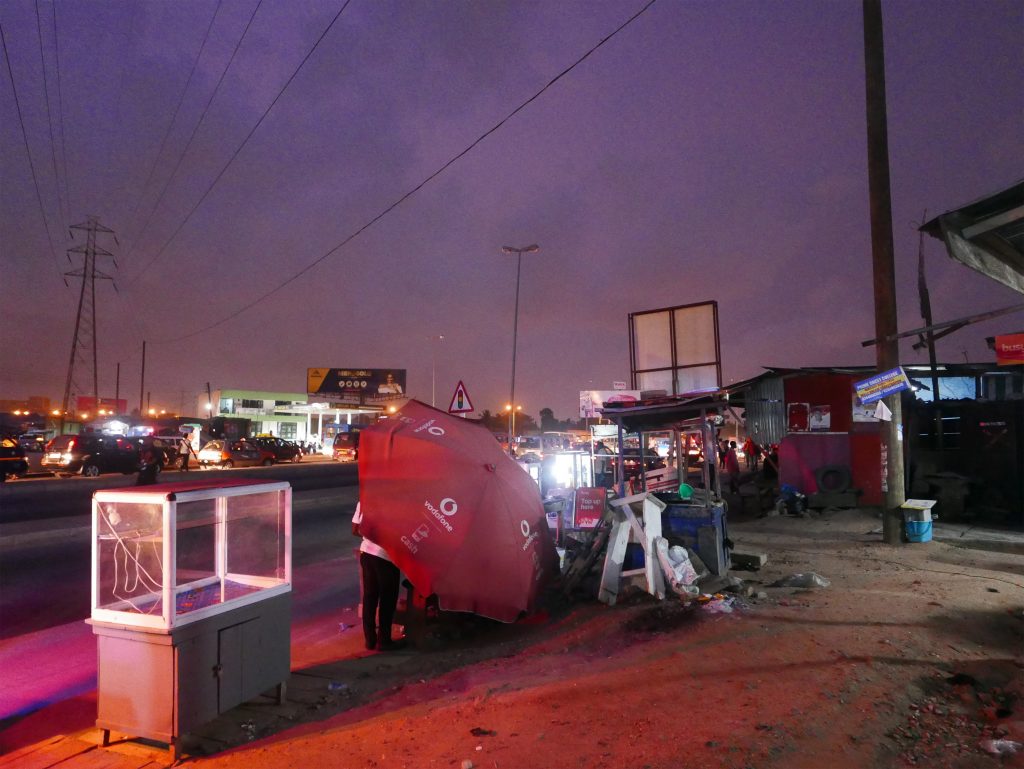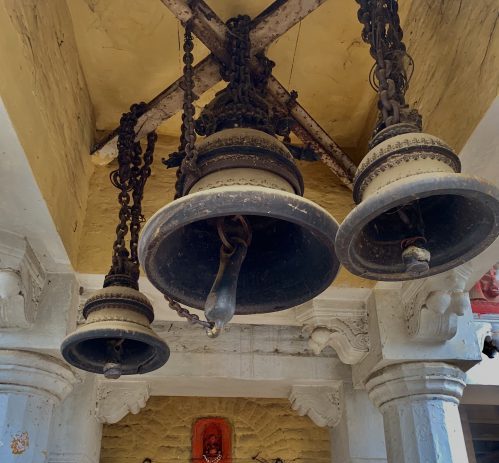This blog outlines the evolution of an urban research method in Accra Ghana, undergirded by a desire to meaningfully engage with a city unfamiliar to the researcher. It highlights the value of place-based ethnography – Junctions or otherwise – as a way of remaining attune to things, people and processes that matter to a city and its inhabitants, writes Kate Dawson
_______________________________________________
For urban researchers interested in the complexity of cities, it can often be difficult to find a place to begin. I have generally been interested in labour and livelihoods, social relations, urban materialities, production processes and sub-cultures in cities, yet where exactly I might encounter these elements has remained difficult to pin down, particularly when researching in an urban space I am not a long-term inhabitant.
Equally, as I have engaged in greater depth with rich ethnographies of urban environments, I have become interested in remaining open to what the field could present, as opposed to entering a space with pre-defined ideas of what and where is important. In this sense, when it comes to fieldwork, I have become gradually committed to a state of un-committing.
This has certainly been disorienting. However, this is an anxiety I have been able to navigate by thinking like a geographer. Indeed, as someone trained in the discipline of place-making and spatial relations, I am often drawn to particular ‘spots’ in the city – or zones where things seem to coalesce and disperse. This position has been further cemented through the reading of ethnographies of places: be those of salons, of streets, of bars.
As I began my doctoral research in Accra, Ghana, this ‘spot’ method became a way of grounding myself in meaningful places in the city. This was in part governed by chance and the people I met. I was fortunate enough to have met a friend who took me to one such zone, in an area of Accra I may not otherwise have spent time, unless I was passing through This place was Awoshie Junction.
Awoshie Junction – sometimes referred to as Baah Yard – sits in the Western area of the Greater Accra Region, connecting the N1, which spans across the entire latitude of Accra, with a north-south road, which bridges Metropolitan Accra with the outer districts of the region. I learned from those, who had worked in the vicinity for many years, that the last 5 years had brought significant changes to the area, perhaps most aptly captured by the development of a multi-lane road, funded in part by the World Bank. The new concrete road expanded the width of the former dirt road, displacing existing markets, enterprises and homes and significantly increasing both the capacity of the number of passing vehicles, as well as their speed.


Upon arrival, I was invited into a hair salon which belonged to the Auntie of my friend. Sat facing out toward the junction, I watched the city unfold with the rhythms and tempos of things and people constantly shifting throughout the day.
Of prominence in this arena of movement was the material of sand, which, brought from the edges of peri-urban Accra, was piled upon passing trucks and taken to rest in the Junction’s sand station. Here it would await sale and redistribution. Though previously invisible to me, it soon became clear that sand was a material of the city. Indeed, mixed with cement and water it formed the concrete skeleton of the expanding city and became a way of understanding the material making of the city. As I watched sand enter and leave the Junction, it became a way of understanding the material rhythms that undergird the concrete production of the city. The Junction was a temporary stopping site for sand – a kind of transition space where sand was transforming from nature to concrete materiality. And so, from the Junction, the city was made.
Yet, while the Junction’s sand station signified the city in production, the station itself faced imminent removal as it fought for space in an increasingly cramped junction. Over the years, a long legal battle had unfolded between the Headquarters of Victory Bible Church and the surrounding occupants, who claimed that the church had no legal rights to the land upon which they worked.
During my time at Awoshie Junction, a court decision had been made in favour of the church, who in the process of completing their multi-storey building, were keen to expand into the surrounding space. The sand station sat in the shadows of the church’s concrete structure and was among the first of occupants to be informed of their imminent removal. They were given a timeframe to remove their structures from this land. And so, from the Junction, the city was unmade.
Meanwhile, as contestations unfolded between the Church and nearby occupants, others faced threats of displacement by the local government, together with GRIDCo (the nationwide electricity transmission organisation). The premise of this removal was founded on the legal framework surrounding electricity transmission lines, which denoted that spaces under the wire should remain vacant. Pressures upon land in the city and the rising cost of both renting and buying land in commercially advantageous places means that in reality, many people across the city live and work under the wires. Over time, I followed occupants at Awoshie Junction who faced threats of removal and the practices of negotiation with the local state that resulted in them staying put – even if for the time being. Indeed, despite threats of displacement, the situation of occupancy was reproduced. And so from the Junction, the city was remade.
Thus, as events unfolded, the Junction became a place from which to see the city as a place being made, unmade and remade. This was a process that could take place in a day, a month or years and tracking these changes allowed me to understand more about the power contestations, historical relations, governmental practices and the materialities embedded in the production of the city.
In this way, the Junction was a way of seeing the city. The Junction was a method in itself. It was a locus from which to make sense of this shifting nature of urban space – a way to grapple with its constant flux of becoming, unbecoming and re-becoming. In this sense, the Junction was more than just a place in the city. The Junction revealed itself as a metaphor for the city itself.
For citation: Dawson, K. (2021). The Junction: Method and metaphor for urban research. Field Research Methods Lab at LSE (22 February) Blog entry. URL: https://blogs.lse.ac.uk/fieldresearch/2021/02/22/the-junction-method-and-metaphor-for-urban-research/






1 Comments